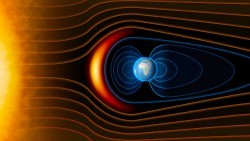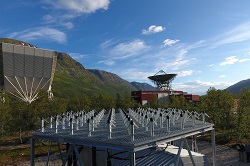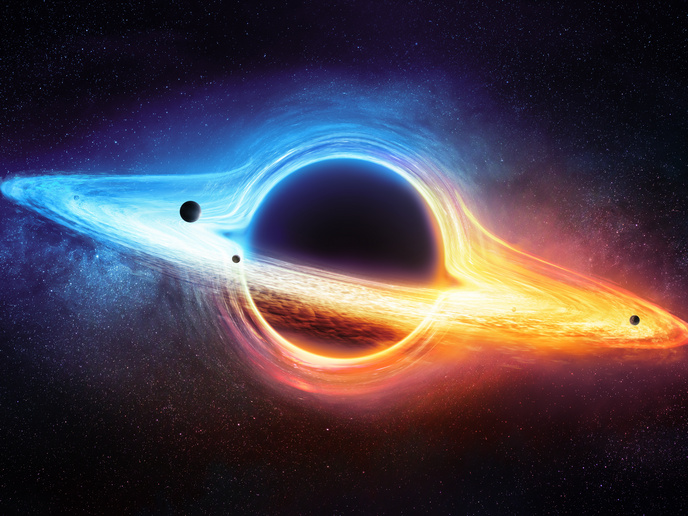Novel prediction tools for SEP events
HESPERIA(opens in new window) (High Energy Solar Particle Events foRecastIng and Analysis) had three core objectives: building new forecasting tools based on empirical forecasting models UMASEP and REleASE; advancing scientific understanding of the physical mechanisms leading to SEPs; and exploring the possibility of incorporating its results into future space weather services. ‘Forecasting solar particle radiation storms, the so-called SEP events, is of potential interest for spacecraft and launching operations, and for the assessment of radio wave propagation conditions in the polar ionosphere of the Earth,’ Dr Olga Malandraki, Senior researcher at the National Observatory of Athens and coordinator of the project, points out. Better SEP predictions would not only make future space exploration missions safer, but also help airlines avoid exposure to resulting radiations. Before HESPERIA was kicked off in 2015, the community was facing the need for new services able to predict solar particle storms with a significantly higher precision. The project successfully fulfils this need with SEP forecasting tools providing accurate real-time forecasting of large SEP events in the energy range of 30-50 MeV and above 500 MeV protons. To make this possible, Dr Malandraki’s team built its novel tools — HESPERIA UMASEP-500 and HESPERIA REleASE — based respectively on empirical forecasting models UMASEP and REleASE, whose high performance is widely acknowledged by the scientific community. The first model uses early signatures in solar activity to predict SEPs, whilst the second focuses on faster particles which tend to reach spacecraft earlier than forecasted. HESPERIA UMASEP-500 makes real-time predictions of the occurrence of GLE events from the analysis of soft X-ray and differential proton flux measured by the GOES satellite network. ‘The main innovation is that our tool utilises spacecraft proton data for the SEP forecasting, which proved to allow the tool to make successful GLE predictions earlier compared to existing predicting models based on ground-based neutron monitor measurements,’ says Dr Malandraki. HESPERIA REleASE, on the other hand, lowers false alarm rates and increases probabilities of detection of energetic protons between 30 and 50 MeV when compared to existing tools. It does so by using near-relativistic and relativistic electrons from the ACE and SOHA spacecraft as precursors. The two tools are available from the project’s website. Understanding SEP-related mechanisms better Beyond its forecasting tools, HESPERIA also brings about important insights into the physical mechanisms resulting in SEPs, most notably the frequent occurrence and sometimes long duration of γ-ray events at photon energies above 100 MeV, as well as the relationship between ‘interplanetary’ (IP) proton occurrence on Earth and protons on the Sun. ‘An important finding was that the long-duration γ-ray events are accompanied by long-duration soft X-ray burst and the formation of coronal loops in the aftermath of “coronal mass ejections” (CMEs),’ Dr Malandraki says of the project’s analysis of γ-ray events above 100 MeV, which currently pose a challenge to our understanding of particle acceleration processes on the Sun leading to SEP occurrence at 1 AU. ‘Also, the long-duration γ-ray events have been found to be accompanied by type II radio bursts at decametric and longer waves, which are produced by electrons accelerated by shock waves in the high corona and the interplanetary medium.’ With regards to IP and Sun proton occurrence, the consortium notably found that the comparatively small number of >500 MeV protons in the impulsive flare makes it highly unlikely that the latter is a significant contributor to the IP population. ‘On the other hand, the number of >500 MeV protons in the sustained emissions makes it highly plausible that they come from the IP population, most likely via the nascent SEP reservoir that forms downstream of the CME-driven shock. A direct conclusion is that the CME-driven shock is the primary source of solar energetic protons both on the Sun and in IP space even at >500 MeV,’ Dr Malandraki explains. The space weather community, including launch operators, civil aviation, and satellite companies, has already shown ‘great interest’ in HESPERIA tools according to Dr Malandraki. In the near future, she hopes that the project will be useful to ESA’s ongoing Space Situational Awareness programme, and that the Community Coordinated Modeling Center — which aims to bring together the next-generation of space-weather models — will exploit the project’s results.







